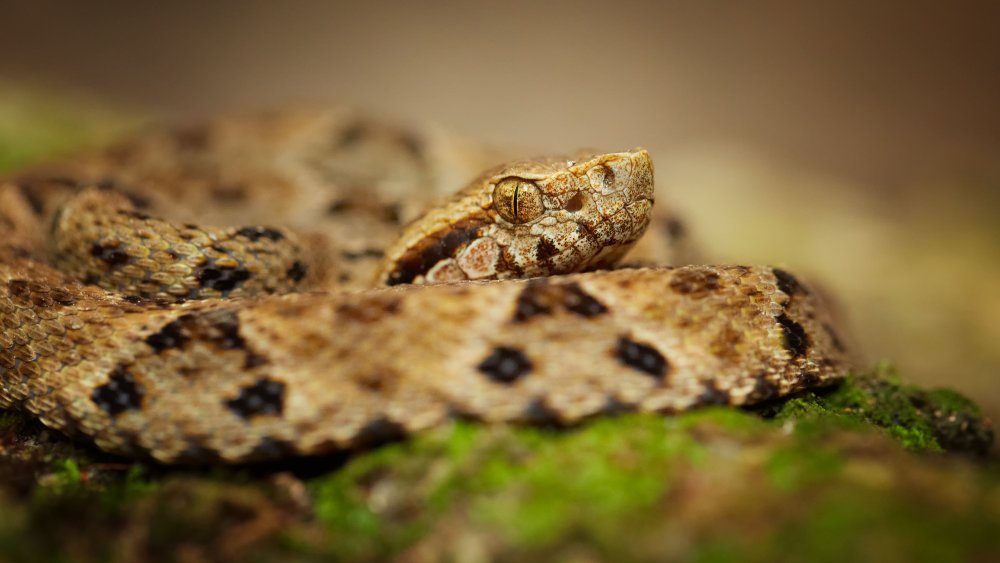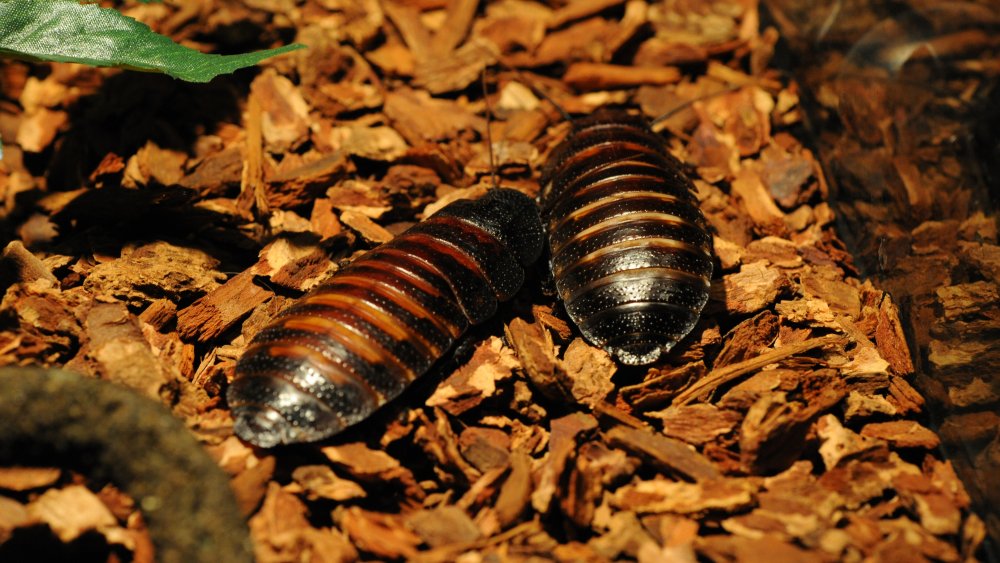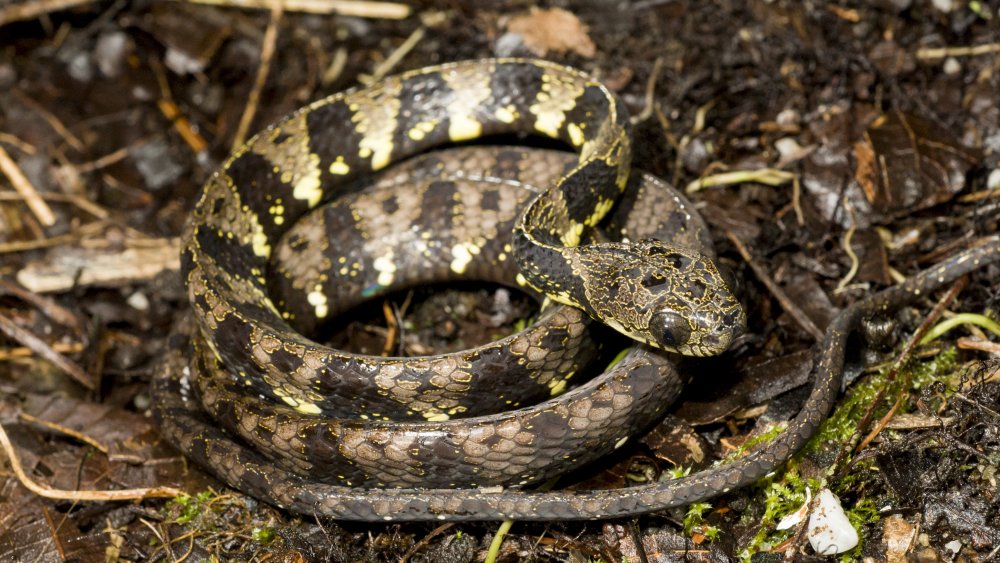Here's What Else You Have To Deal With On Snake Island
It probably won't come as a surprise that if you're unfortunate enough to be one of the people Brazil sends to Snake Island, you should watch your step for snakes. Locals will tell you that the tiny bump of land just miles from the Brazilian coast is crawling with as many as five snakes per square meter, but according to Atlas Obscura, that number is a little high. Biologist Marcelo Duarte says it's closer to one snake per square meter. (Phew!) And these aren't just any snakes, either. Smithsonian magazine estimates Snake Island's population of golden lancehead vipers — one of the world's most venomous snakes — to be between 2,000-4,000.
Packed full of poison that is three-five times stronger than that of any of its cousins in mainland Brazil, the bite from a golden lancehead causes rapid necrosis of muscular tissue, i.e., it melts flesh. It can also cause your kidneys to fail, your brain to hemorrhage, and your intestines to turn into a sack of blood in your belly. Then, of course, you die. "With these snakes it will be a particularly painful death," Australian biologist Bryan Fry told 60 Minutes. "You're going to die screaming." Ouch. We really wish we could tell you that such nightmarish reptiles are the extent of your worries on Snake Island, but, alas, that is far from the truth.
You'll also have to deal with Snake Island's horrifically big bugs
Our first warning is to simply never set foot on Snake Island, and you should be able to live out the rest of your life heeding that sage advice. But if, for some reason, you can't, our second recommendation is to watch your step. And third: snakes aren't the only thing you'll need to keep an eye out for.
Let's say you're somehow totally fine with things that slither and hang from the tree branches in search of anything that moves in order inject it with instant death. But how are you with creepy-crawlies? Because snakes aren't the only things that'll be coming after you if you aren't careful. When the intrepid folks over at Vice took a nightmarish tour of the island alongside the Brazilian Navy on one of their trips for lighthouse maintenance, they discovered that come bedtime, the ground swarmed with cockroaches and locusts. "There are blue locusts and so many of these weird, prehistoric-looking cockroaches on the ground at night that it crunches when you walk," said one of the producers. "Place is f*****. No one is allowed there for a reason. Don't ever go." (That's what we said.) But they did say that the diving around Snake Island was great, so if you do decide to visit, just keep your scuba gear on and stay in the water.
Oh yeah, golden lanceheads aren't the only snakes you have to worry about on Snake Island
Just when you thought we were done listing all the terrifying, poisonous, and downright disgusting members of the animal kingdom that reign on Snake Island, we've got some bad news for you. There are other kinds of snakes on the island as well. Unless you're a snail, however, you probably won't have to worry about this one. According to a 2005 study published in the scientific journal Zootaxa and posted to Research Gate, another species called Sauvage's snail-eater, or Dipsas albifrons, also calls the island home. If this is all becoming too much, then we have at least a glimmer of hope for you: at least Sauvage's snail-eaters are not poisonous, according to iNaturalist. That's good news, right? Now you only have to worry about the thousands of other world's deadliest snakes if you, for whatever reason, find yourself on Snake Island someday (which, we'll repeat, is absolutely never, ever, ever recommended).
Apparently these less deadly serpents have been able to rustle up enough slow, defenseless snails on the island to stay happy and full and have no need to evolve venom that liquefies your insides. Still, they do have a similarly golden hue, so unless you're an expert herpetologist and can quickly identify the killers from the snail-munchers, it's best to follow a strict no-touch policy.


